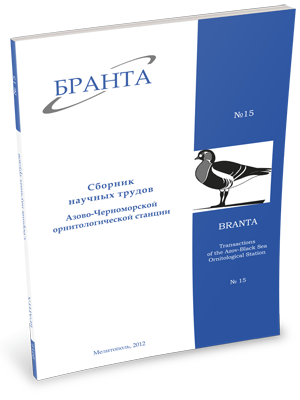
Transactions
of the Azov-Black Sea Ornithological Station



Shrike migrations in the Mountain Crimea
A. N. Tsvelykh, B. A. Appak
There are data on the migration of shrikes in the Mountain Crimea. The Lesser Grey Shrikes (Lanius minor) appear in the Mountain Crimea in late April-early May (the earliest registration is 28.04). Mass passage is in the second decade of May. The migration finishes in early June (the latest registration is 7.06). During spring migration the Lesser Grey Shrikes often form temporary concentrations. Autumn passage in mountains is insignificant - mainly in August (the latest registration is 12.09). The Red-backed Shrikes (Lanius collurio) appear in the Mountain Crimea in late Aprilearly May (the earliest registration is 29.04). Mass passage is in the second decade of May. The migration finishes in late May. Autumn passage is during September. In some years migratory Red-backed Shrikes (mainly young birds) regularly occur up to mid October (the latest registration is 16.10).
Formerly, Great Grey Shrikes (Lanius excubitor) mainly only wintered in the Mountain Crimea: they arrived in mid October and departed in March-early April. In recent decades these birds sometimes began occurring during spring migration of other species of shrikes – in a period from late April to early June (the latest registration is 10.07), and dates of the earliest autumn registrations shifted to early September (the earliest registration is 9 September). Migration of the Woodchat Shrikes (Lanius senator) is absent in the Mountain Crimea. There are known rare accidental visits in the foothills in the spring period and sporadic cases of breeding.
Read the paper in a PDF file